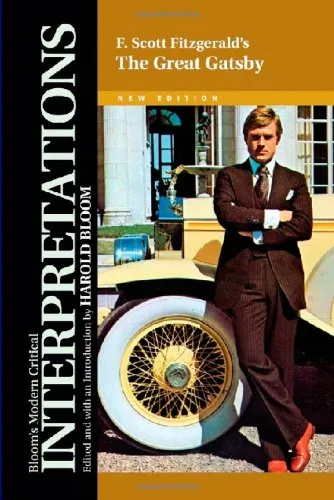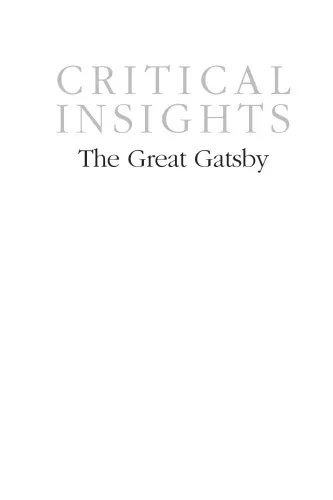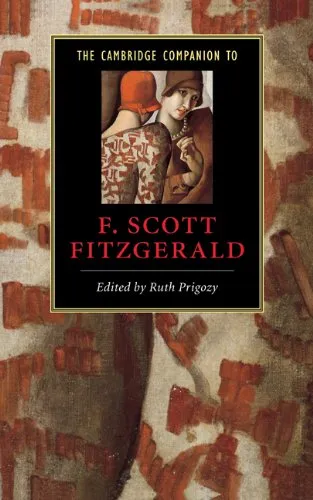F. Scott Fitzgerald's The Great Gatsby (Bloom's Modern Critical Interpretations)
3.8
Reviews from our users

You Can Ask your questions from this book's AI after Login
Each download or ask from book AI costs 2 points. To earn more free points, please visit the Points Guide Page and complete some valuable actions.Related Refrences:
Persian Summary
Introduction to F. Scott Fitzgerald's The Great Gatsby (Bloom's Modern Critical Interpretations)
Welcome to the world of F. Scott Fitzgerald's "The Great Gatsby," a cornerstone of American literature. This volume, edited by renowned literary critic Harold Bloom, delves into the profound themes, vivid imagery, and timeless narrative that make "The Great Gatsby" an enduring classic. Through insightful essays and critical interpretations, this guide offers a deeper understanding of Fitzgerald's masterpiece, exploring its relevance in today's cultural and literary landscape.
Detailed Summary of the Book
"The Great Gatsby," published in 1925, is a novel that paints a picture of the Roaring Twenties, an era marked by prosperity and excess. Set in the fictional towns of West Egg and East Egg on Long Island, the story is narrated by Nick Carraway, a Yale graduate and World War I veteran. He rents a small house next to the opulent mansion of Jay Gatsby, a mysterious millionaire known for his extravagant parties. Through the course of the novel, Nick becomes entwined with Gatsby's obsession with rekindling a past romance with Daisy Buchanan, Nick's cousin, who is now married to the wealthy but philandering Tom Buchanan.
The novel intricately explores themes of wealth, class, love, and the American Dream. Fitzgerald critiques the moral decay behind the glittering facade of affluence. As Gatsby's tragic story unfolds, readers witness the unraveling of the American Dream, grounded in reality and illusion. The novel's complex characters and intricate symbolism offer a rich tapestry of meaning that continues to captivate readers and scholars alike.
Key Takeaways
- Exploration of the American Dream and its moral implications.
- The complex social hierarchy and class distinctions of the 1920s.
- The impact of wealth and excess on human integrity and relationships.
- Fitzgerald's use of symbolism, including the green light and the eyes of Dr. T.J. Eckleburg.
- The novel as a reflection of the historical context of the Jazz Age.
Famous Quotes from the Book
Fitzgerald's writing is lauded for its poetic and poignant prose. Some of the most famous quotes capture the essence of "The Great Gatsby" beautifully:
"So we beat on, boats against the current, borne back ceaselessly into the past."
"I hope she'll be a fool—that's the best thing a girl can be in this world, a beautiful little fool."
"Gatsby believed in the green light, the orgastic future that year by year recedes before us."
Why This Book Matters
"The Great Gatsby" is more than just a story; it's a timeless exploration of themes that continue to reverberate in modern society. Its critique of the American Dream remains relevant as it encourages readers to reflect on the true nature of success and fulfillment. Fitzgerald's nuanced portrayal of wealth and moral decadence offers insights into societal values, making it a critical text for understanding the complexities of human ambition and desire. This modern critical interpretation brings new perspectives to these enduring themes, inviting readers to engage with the novel on a deeper level.
Whether you are approaching "The Great Gatsby" for the first time or revisiting it with fresh eyes, this guide offers valuable interpretations and critical discourse that enhance your appreciation of Fitzgerald's literary genius. As you explore the intricacies of Gatsby's world, you'll gain a deeper understanding of why this book remains a pivotal piece of American literature.
Free Direct Download
Get Free Access to Download this and other Thousands of Books (Join Now)
For read this book you need PDF Reader Software like Foxit Reader




